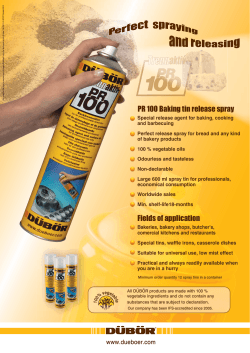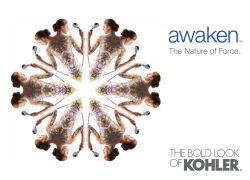
SUMMARY OF PRODUCT CHARACTERISTICS 1. NAME OF THE
1.3.1 SPC, labelling and package leaflet
SUMMARY OF PRODUCT CHARACTERISTICS
1.
NAME OF THE MEDICINAL PRODUCT
Azelastin-POS 1 mg/ml nasal spray, solution
2.
QUALITATIVE AND QUANTITATIVE COMPOSITION
Solution containing 1 mg/ ml azelastine hydrochloride
The delivered dose per actuation (0.14 ml) contains 0.14 mg azelastine hydrochloride.
For the full list of excipients, see section 6.1.
3.
PHARMACEUTICAL FORM
Nasal spray, solution.
Clear, colourless solution.
4.
CLINICAL PARTICULARS
4.1
Therapeutic indications
Symptomatic treatment of seasonal allergic rhinitis. Azelastin-POS nasal spray is indicated in adults
and children aged 6 years and older.
4.2
Posology and method of administration
Posology
One spray of Azelastin-POS nasal spray is applied into each nostril twice daily (morning and
evening). This corresponds to a daily dosage of 0.56 mg of azelastine hydrochloride.
Paediatric population
Azelastin-POS nasal spray is suitable for adults and children over the age of 6 years. Azelastin-POS
should not be used in children below 6 years of age due to lack of data on safety and efficacy.
Method of administration
For nasal use.
Edition 07/2014
1.3.1 SPC, labelling and package leaflet
Remove the cap before use.
Press the pump mechanism until the solution is emitted (usually once or twice).
The system is now ready for use for any further application.
Insert the nose adapter ("nozzle") in a nostril and pump once, breathing in lightly
at the same time. Apply one spray into each nostril. Spray with head held upright,
do not tilt the head far backwards during administration. For hygienic reasons wipe
off the nose adapter after each application and close it with the protective cap.
Azelastin-POS nasal spray should only be used by one and the same person.
Duration of treatment
Azelastin-POS nasal spray can be used until the cessation of complaints, but should not be used
without interruption for more than 6 months.
4.3
Contraindications
Hypersensitivity to the active substance azelastine hydrochloride or to any of the excipients listed in
section 6.1.
Paediatric population
Azelastin-POS should not be used in children below 6 years of age.
4.4
Special warnings and precautions for use
Azelastin-POS nasal spray is not suitable for treatment of common cold or flu.
4.5
Interaction with other medicinal products and other forms of interaction
No interactions became known for the topical use of azelastine hydrochloride until now.
4.6
Fertility, pregnancy and lactation
Pregnancy:
There is no or limited amount of data from the use of azelastine in pregnant women. Even though
there is no evidence for a teratogenic effect in animals even in doses higher than therapeutically
used, use of Azelastin-POS nasal spray is not recommended during the first trimester of pregnancy.
Breast-feeding:
Due to the lack of data, Azelastin-POS nasal spray should not be used during breast-feeding.
4.7
Effects on ability to drive and use machines
In few instances after use of Azelastin-POS nasal spray, the patients may experience fatigue,
weariness, exhaustion, dizziness or weakness, complaints which may be caused by the disease
itself, as well. In these cases, the ability to drive and use machines may be impaired. Special
attention should be paid to the fact that alcohol or other medication may enhance these effects.
Edition 07/2014
1.3.1 SPC, labelling and package leaflet
4.8
Undesirable effects
Adverse reactions are listed below by system organ class and frequency. Frequencies are defined as:
Very common (≥ 1/10);
Common (≥ 1/100 to < 1/10);
Uncommon (≥ 1/1,000 to < 1/100);
Rare (≥ 1/10,000 to < 1/1,000);
Very rare (< 1/10,000);
Not known (cannot be estimated from the available data).
Immune system disorders
Very rare: Hypersensitivity reactions
Nervous system disorders
Common: Dysgeusia (unpleasant taste), may be experienced after administration (often due to
incorrect method of application, namely tilting the head too far backwards during administration),
which may lead to nausea in rare cases.
Very rare: Dizziness
Respiratory, thoracic and mediastinal disorders
Uncommon: Nasal discomfort of the inflamed nasal tissue (stinging, itching), sneezing, epistaxis
Gastrointestinal disorders
Rare: Nausea
General disorders
Very rare: Fatigue (weariness, exhaustion), dizziness or weakness (may also be caused by the
disease itself)
Skin and subcutaneous tissue disorders
Very rare: Rash, pruritus, urticaria
Reporting of suspected adverse reactions
Reporting suspected adverse reactions after authorisation of the medicinal product is important.
It allows continued monitoring of the benefit/risk balance of the medicinal product.
Healthcare professionals are asked to report any suspected adverse reactions
via the national reporting system listed in Appendix V.
4.9
Overdose
There are no experiences on the administration of toxic doses of azelastine hydrochloride in human.
Symptoms:
In the event of overdose or intoxication disturbances of the central nervous system are to be
expected based on the results of animal experiments.
Treatment:
Treatment of these disorders must be symptomatic. There is no known antidote.
Edition 07/2014
1.3.1 SPC, labelling and package leaflet
5.
PHARMACOLOGICAL PROPERTIES
5.1
Pharmacodynamic properties
Pharmacotherapeutic group: Decongestants and other nasal preparations for topical use, Antiallergic
agents, excl. corticosteroids, ATC code: R01AC03
Azelastine is classified as a potent long-acting antiallergic compound (t ½ 20 hours) with
selective H1 -antagonist properties.
Furthermore, data from in vivo (guinea pig) studies show that azelastine applied in therapeutically
relevant dosages inhibits leukotriene- and PAF-induced bronchoconstriction.
Inhibition of inflammation of the respiratory tract as the basis for hyperreactivity reactions as shown
in animal experiments with azelastine hydrochloride can be ascribed to these properties. The
relevance of these findings from animal experiments for human therapy is not clear.
5.2
Pharmacokinetic properties
Following oral administration to animals and humans, azelastine hydrochloride is rapidly absorbed
and distributed into the periphery, in particular into the lungs, skin, muscles, liver and kidney, but
only marginal into the brain. A dose proportional kinetic was observed. Excretion of azelastine
hydrochloride and its metabolites occurs mainly via the faeces (appr. 75%) and via urine (25%).
Important metabolic pathways include ring hydroxylation, N-desmethylation and oxidative opening
of the azepine-ring.
In patients with allergic rhinitis after a total daily dose of 0.56 mg azelastine hydrochloride (i.e. two
sprays per nostril once daily) the steady state mean plasma concentrations of azelastine
hydrochloride observed two hours after dose were about 0.65 ng/ml. This plasma concentration did
not lead to clinically relevant systemic undesirable effects. Due to the dose proportionality an
increase in plasma concentration is expected with increase of the daily dosage.
5.3
Preclinical safety data
After repeated oral administration of azelastine hydrochloride to rats or dogs first toxic symptoms
were observed starting with dosages 75 times of the maximal daily dose recommended in humans
indicating little relevance to clinical use.
In rats, in particular the liver (increase in serum enzyme activity of AST, ALT and ALP, and
increase of organ weight, cell hypertrophy, fat infiltration) and the kidneys (increase of urea
nitrogen and urine volume, increased elimination of sodium, potassium and chloride, increase of
organ weight) proved to be the main target organs. Effects were observed only after dosages
equivalent to a 200-fold increase in the normal oral daily dose in humans.
In young and adult animals no toxic effects were observed with dosages of at least 30 times of the
maximal daily dose recommended in humans.
Intranasal application of high dosages of azelastine hydrochloride nasal spray to rats (appr. 130
times of the recommended human intranasal dose, referred to body weight) and dogs (appr. 25
Edition 07/2014
1.3.1 SPC, labelling and package leaflet
times of the recommended human intranasal dose, referred to body weight) over a period of 6
months did not result in any local or organ specific toxic effects.
Sensitising potential:
Azelastine hydrochloride displayed no sensitising potential in the guinea pig.
Mutagenecity/Cancerogenicity:
Azelastine hydrochloride demonstrated no mutagenic potential in in-vitro and in-vivo tests, nor any
carcinogenic potential in rats or mice.
Embryotoxicity/Teratogenicity:
In animal experiments, azelastine hydrochloride passed the placenta, and small amounts were found
in breast milk. Embryotoxicity studies after oral administration in rats, mice and rabbits indicated
teratogenic effects only in mice, and the observed effects occurred only at maternal toxic doses
(68.6 mg/kg/day). The lowest embryotoxic oral dosage was 30 mg/kg/day in all three species.
Fertility disorders were observed in female rats at oral doses greater than 3 mg/kg/day.
6.
PHARMACEUTICAL PARTICULARS
6.1
List of excipients
Disodium edetate
hypromellose
disodiumphosphate dodecahydrate
citric acid anhydrous
sodium chloride,
purified water.
6.2
Incompatibilities
Not applicable
6.3
Shelf life
2 years
Shelf life after first opening of the container: Do not use Azelastin-POS nasal spray longer than 6
months after first opening.
6.4
Special precautions for storage
Do not refrigerate or freeze. Do not store above 25 °C.
6.5
Nature and contents of container
Azelastin-POS nasal spray is filled in a multidose container (consisting of high-density
polyethylene) fitted with a dosing pump. One bottle contains 10 ml of solution.
Edition 07/2014
1.3.1 SPC, labelling and package leaflet
6.6
Special precautions for disposal and other handling
No special requirements.
7.
MARKETING AUTHORISATION HOLDER
URSAPHARM Arzneimittel GmbH
Industriestraße 35
66129 Saarbrücken, Germany
Tel: +49 6805 92 92-0
Fax: +49 6805 92 92-88
Internet: www.ursapharm.de
e-mail: info@ursapharm.de
8.
MARKETING AUTHORISATION NUMBER(S)
9.
DATE OF FIRST AUTHORISATION
DD/MM/YYYY
10.
DATE OF REVISION OF THE TEXT
MM/YYYY
Edition 07/2014
© Copyright 2025









